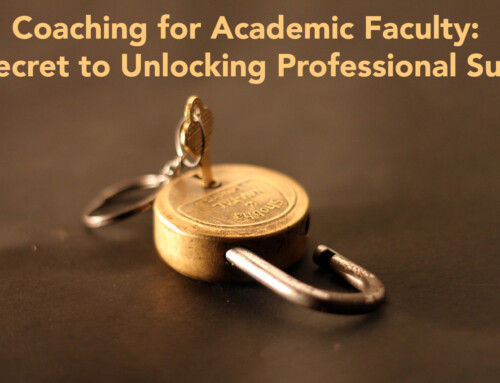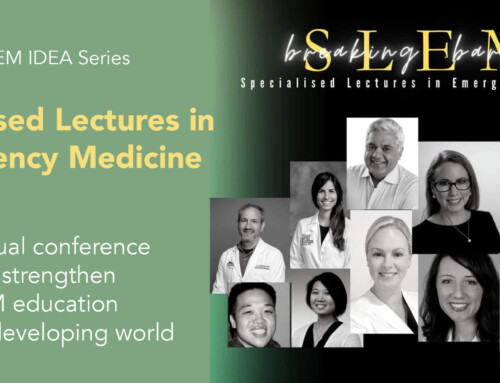 Before I start creating a new talk, I ask myself 3 questions:
Before I start creating a new talk, I ask myself 3 questions:
- Who will be in the audience?
- How can I make my talk more worthwhile to audience members, beyond their just reading the material/handout/articles on their own?
- Am I giving a talk before or after Dr. Amal Mattu? If so, just be resigned to being second-best.
Two years ago, I started giving the annual Education Journal Club talk for the CORD Academic Assembly. To spice-up these talks, I emailed the first authors of articles that I reviewed to get their insight, comments, and behind-the-scenes thoughts. Both years I was surprised by how eloquent, well thought-out, and responsive they all were. I got a flurry of emails within 24 hours! This added touch makes the articles more personal and relevant for the audience, in my opinion.
Trick of the trade:
For evidence-based talks, don’t be afraid to email the publication’s author(s) for more insight or clarification. You might be surprised by how approachable they are. In most cases, they are thrilled that you cared enough to ask questions.
This year, Dr. Sorabh Khandelwal (the Ohio State Univ) and I are jointly giving the CORD Education Journal Club, reviewing 2009 publications. The target audience includes clerkship directors and undergraduate medical educators. And don’t worry, Amal is talking on the day AFTER us. Whew.
We are each reviewing 4 articles. I sent out emails to the first authors of my 4 articles and I already got responses back within 12 hours! Here are highlights of their responses, which I am incorporating into my slides.
Goldman E, et al. Learning in a chaotic environment. Journal of Workplace Learning. 2009; 21(7):555-74.
- “I sent your message to the whole research team so you may be hearing from others!”
- “Post-study reflection: Encourage students and faculty to participate in research! I was very surprised how hard it was to recruit.”
- Dr. Ellen Goldman (George Wash Univ), who teaches a qualitative research course in a medical fellowship program, commented about how hard it is to publish qualitative research. Disproportionate value is placed on quantitative research in medicine. There are so many misunderstandings about qualitative research, making it truly an underappreciated science. Hopefully with more excellent manuscripts like this one, things will change with time.
Chretien KC, Greysen SR, Chretien JP, Kind T. Online posting of unprofessional content by medical students. JAMA. 2009 Sep 23;302(12):1309-15.
- “It was a whirlwind study– had the idea in August 2008, pitched it to AAMC Jan 2009, surveyed in Feb-Mar 2009 and submitted the manuscript end of April! I wish I could bottle that kind of momentum for future use.”
- “My coauthors and I are big proponents of using technology in medical education.”
- “I think the media interviews really focused on the negative –everyone wanted to know what the most egregious example of unprofessional posting was – while our primary focus was to say: this is something we need to be talking about, thinking about, because it’s out there and could change the face of medical professionalism as we know it.”
- “We just finished a follow-up study – a focus group study of medical students and their perspectives on online professionalism. Hopefully will be presenting this data soon.”
- Thanks to Dr. Katherine Chretien (Washington DC VA Med Center) for these cool behind-the-scenes comments.
Senecal et al. A four-year perspective of society for academic emergency medicine tests: an online testing tool for medical students. Acad Emerg Med. 2009 Dec;16 Suppl 2:S42-5.
- Dr. Emily Senecal (Mass General) will actually be at CORD and hopefully lend some in-person comments after I review her article on the SAEM Test database that is being used by most of the EM clerkships in the U.S.
- “One of the ongoing goals is to continue to integrate SAEM Tests with the online educational materials that are currently being developed by CDEM (DIEM cases, Self Study Modules, on line lectures, etc).”
Zabar et al. Can unannounced standardized patients assess professionalism and communication skills in the emergency department? Acad Emerg Med. 2009 Sep;16(9):915-8.
- “We are currently sending unannounced standardized patients (USP) into an urban inner city community clinic [instead of the ED] and comparing the results to our resident’s OSCE scores. This is far less challenging than the ER environment but is bringing us rich data not only about our residents skills (most residents on aggregate have similar scores to the OSCE but a not insignificant group have lower scores in OSCE and than USP and another group was higher in the OSCE then the USP) but also information about the team system they work in.”
- “This information has been fed back to the clinic and resulted in changes.”
- “In internal medicine residents, we also found the weakest skill is patient education. We are hoping to expand our program to other residencies and sites soon and focus on some out-patient patient safety issues.”
- If you want to find more about some of Dr. Sandy Zabar’s (NY University) group educational innovations please check out http://prmeir.med.nyu.edu.




